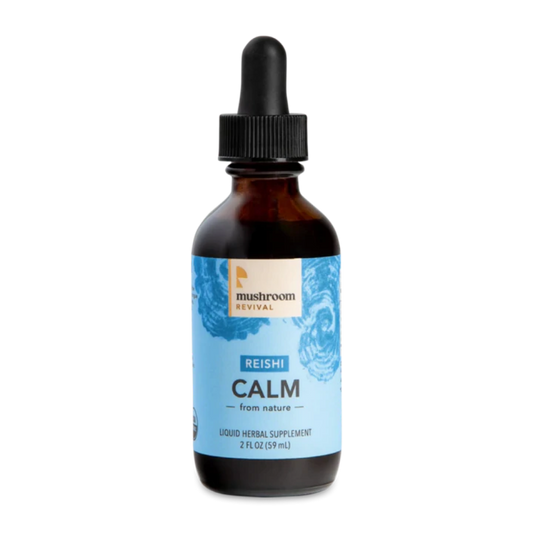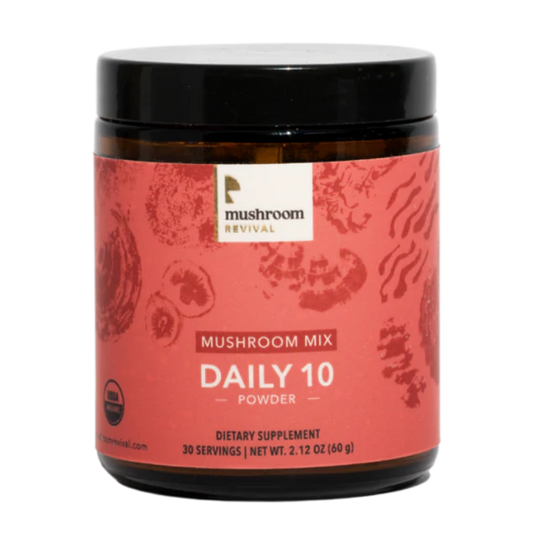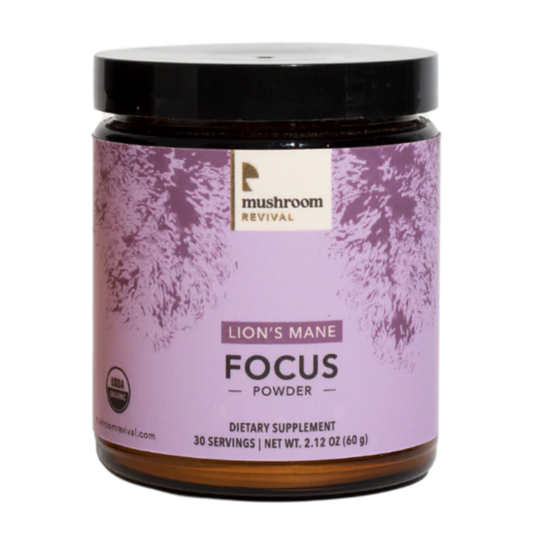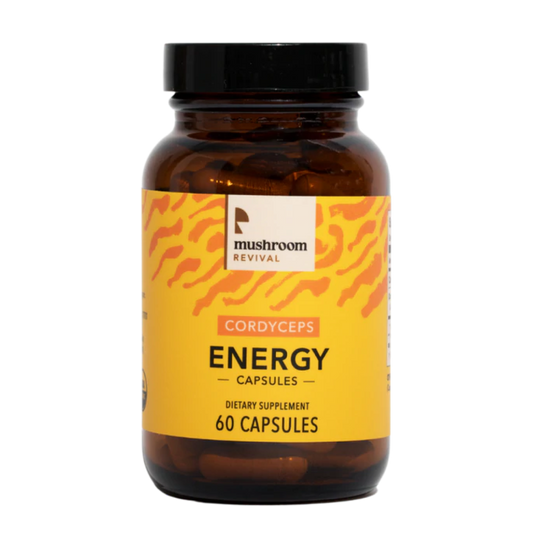What is Chaga and why is it important?
Maybe you overheard someone in a yoga class raving about Chaga, or recently saw it listed as an ingredient in a supercharged coffee at your neighborhood java spot. Chaga is trending and for good reason; however, there are some important things to know about this fungi especially if you are looking to add it to your routine.
Unlike other cap and stem mushrooms Chaga might look rather unassuming if you saw it in the wild. Chaga produces what appears to be a type of woody growth that looks similar to burnt charcoal, which is the actual conk of the fungi. Chaga can be found growing from birch trees. The inside of the Chaga conk is soft and spongy and a rich orangish brown color. Chaga is also known as black mass, clinker polypore, birch canker polypore, or cinder conk.
If you live on the East Coast, where Chaga grows most prolifically in North America, chances are you’ve come across a slew of products containing this functional sterile conk. Chaga herbal supplements show up in the form of teas, are added to coffee, honeys, maple syrups, tinctures, and even skincare. Chaga is special in that it has a great reputation to support overall wellbeing.* In this 101 guide we will explore everything you need to know about Chaga and its benefits for supporting wellness.*
What beneficial compounds are in Chaga?
There are some very good reasons that Chaga has been one of the most trending mushrooms in recent years. Chaga is full of 1,3 / 1,6 Beta-glucans like other functional mushrooms. We include Chaga in our Daily 10 blend because it contains 1,3 / 1,6 beta glucans just like the other nine functional mushrooms included in the formula. Chaga also contains triterpenoids, polyphenols, and other minerals to help support overall wellness.* There are two parts of Chaga that are used in functional mushroom supplements: the conk and the mycelium. The conk is the woody growth that resembles burnt charcoal on the outside and is soft and spongy and orangish brown on the inside. The mycelium are the roots of the conk that support its growth but does not have as many beneficial properties as the sterile conk.
Compounds in the sterile conk that are not in the mycelium:
- Betulin
- Betulinic acid
- Melanin
- Lupeol
- Lanosterol
- Inotodiol
- Trametenolic acid
- 24-methylene dihydrolanosterol
- 4,4-dimethylfecosterol
- 4-methyl fecosterol
- Fecosterol
- Episterol
- Foscoparianol B
- Foscoparianol D
The sterile conk also has up to 7x more 1,3 1,6 beta-glucans compared to mycelium.
What are the benefits of using Chaga mushrooms?
May help support the immune system*
Chaga is popular because it may help support the immune system since it contains the popular compounds 1,3/1,6 beta-glucans. In addition, Chaga has a unique constituent known as betulinic acid which has been shown to support healthy cell turnover.*
Chaga helps support overall skin health.*
Chaga mushrooms contain a large amount of the pigment melanin, which promotes protection from UV radiation. This mushroom also offers potent antioxidant support and is nutrient dense with essential vitamins and minerals.* Chagas dense nutrient profile also offers support for healthy aging.*
Ways to enjoy Chaga / How to use Chaga
Chaga conks are not like common culinary mushroom varieties such as Maitake and Shiitake; they need to be extracted or brewed in order to release the beneficial compounds that support our minds and bodies.*
Chaga Tinctures:
Tinctures are a type of concentrated liquid supplement that go through multiple extraction processes to pull out the beneficial compounds. Tinctures with Chaga are extremely easy to incorporate into your routine and are the perfect type of supplement if you find yourself always ‘on the go’.
Tinctures with Chaga can be used by taking two droppers (or whatever dosage is recommended) sublingually (under the tongue) and swishing around the mouth for at least twenty seconds or by adding the droppers to your favorite beverage or recipe.
We always recommend sourcing a high quality dual-extracted tincture like our Daily 10 Mushroom Mix Tincture with Chaga. We explain more about why being dual extracted matters later; but just know that using a tincture that is dual-extracted ensures you are getting all of the beneficial compounds that are both alcohol-soluble and water-soluble.
Chaga Capsules and Powders:
Chaga may also be incorporated into your daily routine in the form of capsules or powders that contain Chaga. Capsules are a great supplement format if you are used to taking them and already have some kind of routine where you could easily add Chaga. Many people love capsules because they are used to taking other supplements that way and there is no preparation associated with capsules. Capsules that contain Chaga are also a wonderful choice for those who prefer not to have any taste associated with their functional mushroom supplements.
Another way to take your Chaga would be a powder. Powders are extremely versatile and can be added into your daily routine in a variety of ways. The most common way to use Chaga powder is to mix it into your beverage of choice; simply measure out the recommended amount and stir or blend it into your beverage. Chaga powders can also be added to broths, overnight oats, no-bake energy bites, and more!
Chaga Drinks and Recipes:
Unlike some of our other favorite functional mushrooms like Maitake and Lions Mane, Chaga isn’t typically prepared in a way that you can eat. But don’t let that limit you! There are a lot of options for Chaga coffee on the market today if you’re looking for a coffee replacement. If you’re more into tea we invite you to try our Chai recipe with Chaga! You can also add Chaga to Turmeric Golden Milk Lattes, Salad Dressings, Healthy cookies and more.
The importance of not over harvesting Chaga
The popularity of Chaga is increasing each day, which is unfortunately causing this rare fungus to be over harvested. While many functional mushrooms can be cultivated, there are certain species, like Chaga, that are only available by wildcrafting. Wildcrafting is the practice of harvesting plants from their natural, or wild, habitat. Additionally, Chaga’s slow and unusual reproduction adds to the obstacles of ensuring sustainable sources of Chaga.
The part of the fungus we use in our Chaga herbal supplements is not technically a mushroom. It is not the ‘fruiting body’ of the fungus, but rather a sterile conk, which many mycologists refer to as a sclerotia or hardened mycelial mass. One to two years after its host tree has died, the fungus will produce tubular pores beneath the bark, where it will remain hidden until it's ready to sporulate. Finally, a fruiting body will force its way out of the bark of the tree, where the ephemeral, nutrient-dense mushroom is promptly consumed by beetles and other hungry organisms.
To make things more mysterious, the orientation of the fungus’ fruiting bodies matter:
“Chaga is aptly named Inonotus (to penetrate) obliquus (an angular shift in degrees) because of the fungus penetrating tree wounds to attack and feed upon the heartwood; and the angular tubes that contain its reproductive spores are slanted 20-30 degrees upward towards the sun. Mycologists believe this is to enable spore dispersal allowing wind currents to carry spores to infect nearby damaged trees. Interestingly, it is almost at par to the angular declination of the Earth relative to the Sun.” - Excerpt from Annanda Chaga, 2019. (1)
Now that we acknowledge the complexity of Chaga and its susceptibility to endangerment, let’s consider what we can do as conscious consumers.
- Don’t Take More Than You Need. Chaga herbal supplements are wonderful, and there is a lot of anecdotal evidence of its ability to support overall health and wellness.*
- Leave Some Chaga Behind. Should you go looking for Chaga in the forest and you find a good amount, make sure to leave at least 30% of the conk behind. The less you take, the better for the fungus. If it appears that a Chaga patch has already been picked from, consider leaving it alone entirely and seeking out other specimens that have not been picked yet.
- Buy Your Chaga from Siberia. Yes, local and wildcrafted mushrooms are two shiny qualities we all look for in many of our food products, but there are cases where this is not the best option. Chaga is very abundant and responsibly harvested in Siberia. This is important because Chaga is actually pretty scarce here in North America. In Siberia there are programs to limit over harvesting and plant back Chaga inoculated trees into the ecosystem, where in North America there are no systems set up currently which can regulate sustainable harvesting. There are also anecdotes of Siberian Chaga being the most potent form on the market due to the harsh climate in which it thrives.*
At Mushroom Revival, we take all these factors into account when we source Chaga to make our organic herbal supplements that contain this functional mushroom. The Chaga found in our Daily 10 blend is sustainably sourced from Siberia, and is so potent it does not take much to reap all the benefits!
We also have a partnership with One Tree Planted to plant a tree for every product we sell. This partnership plants trees all over the world to help support Mother Earth and to promote more sustainable mushroom harvesting practices.
When to take Chaga
When to take your Chaga is completely up to you! One of the best things about functional mushrooms is how easy they are to incorporate into your current lifestyle; you don’t have to change your schedule around to take them. Because Chaga (like other functional mushrooms) is considered to be an adaptogen, it will support your mind and body throughout the day. Adaptogens are fungi, herbs, and plants that support your body in maintaining homeostasis. You can think of this support like cruise control assists a vehicle in maintaining a constant speed while adjusting to external factors.
Some people prefer to stack their supplements at the beginning of the day so they don’t have to think about it anymore; whereas others prefer to take them in the middle or evening so they are not taking them on an empty stomach. The choice is truly yours when it comes to Chaga, but we would recommend incorporating it into your routine in the morning or early afternoon!
What to look for in Chaga supplements
We have two main tips for when you’re shopping for Chaga supplements:
- When you are choosing a tincture it is important to make sure that it is ‘dual-extracted’. By sourcing a dual-extracted tincture with Chaga you can know that you are putting only the best stuff into your body and not fillers! The dual extraction process simply means that there has been an alcohol extraction and a water extraction to pull out the beneficial constituents as some are alcohol-soluble whereas others are water-soluble. Purchasing a dual-extraction means that you are getting a more potent product.
- As we talked about earlier it’s extremely important to know where your Chaga is coming from and that it is sustainably harvested. Unlike other functional mushrooms that can be cultivated, Chaga is one that must be wild harvested. Because of the unique conditions Chaga grows in and the duration of time, sustainably sourcing so that the Chaga can continue to grow is extremely important. Here at Mushroom Revival, we source all of the Chaga for our Daily 10 formula sustainably from Siberia.
Potential Side Effects of Chaga
As with any dietary supplement, consult your physician before incorporating Chaga into your regimen or increasing your consumption of them as health benefits and side effects can vary. We are not doctors, and as always we encourage you to consult your primary health care provider for more information prior to consuming any supplement or functional mushroom.*
Click here to find out more about Chaga!***









